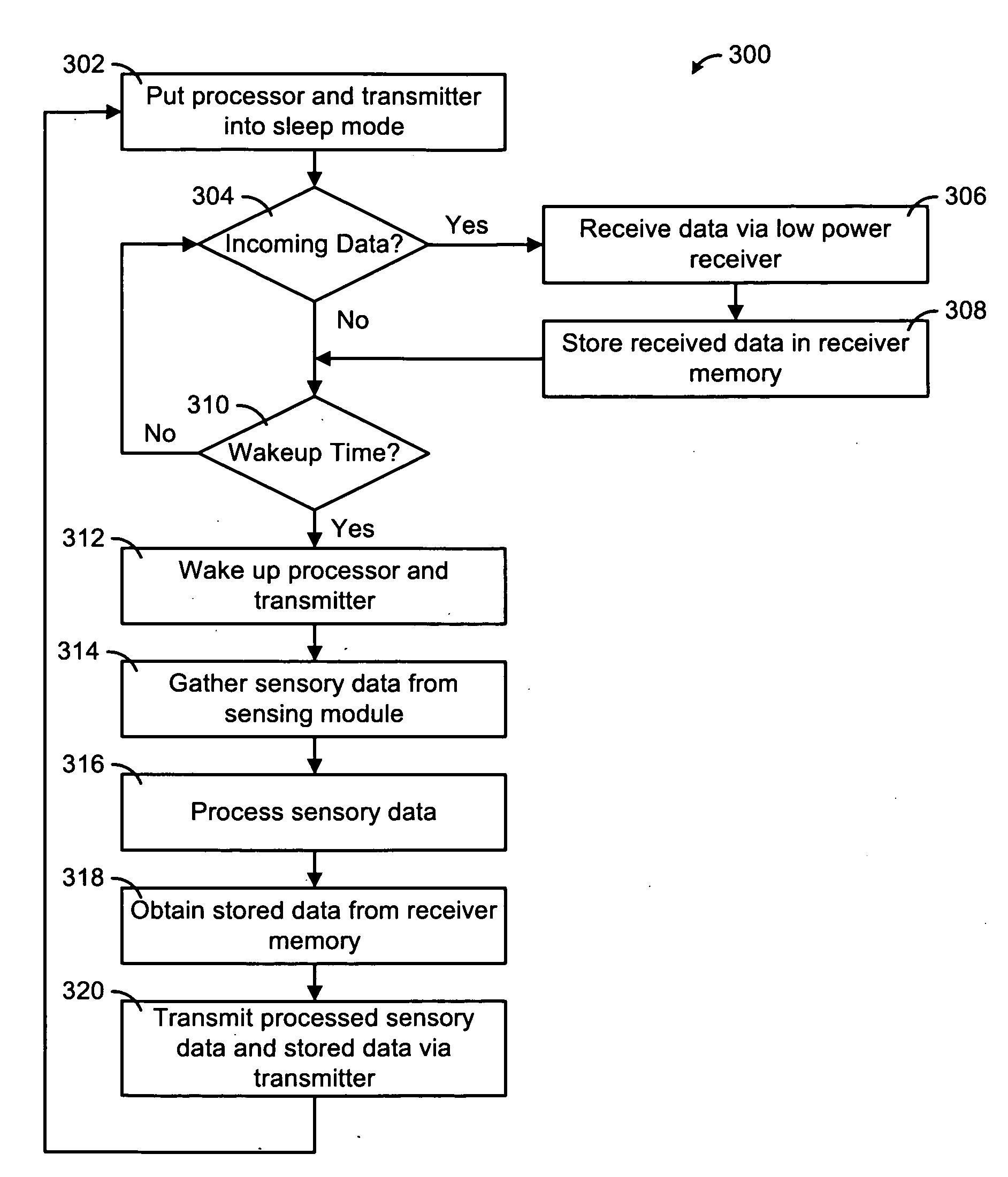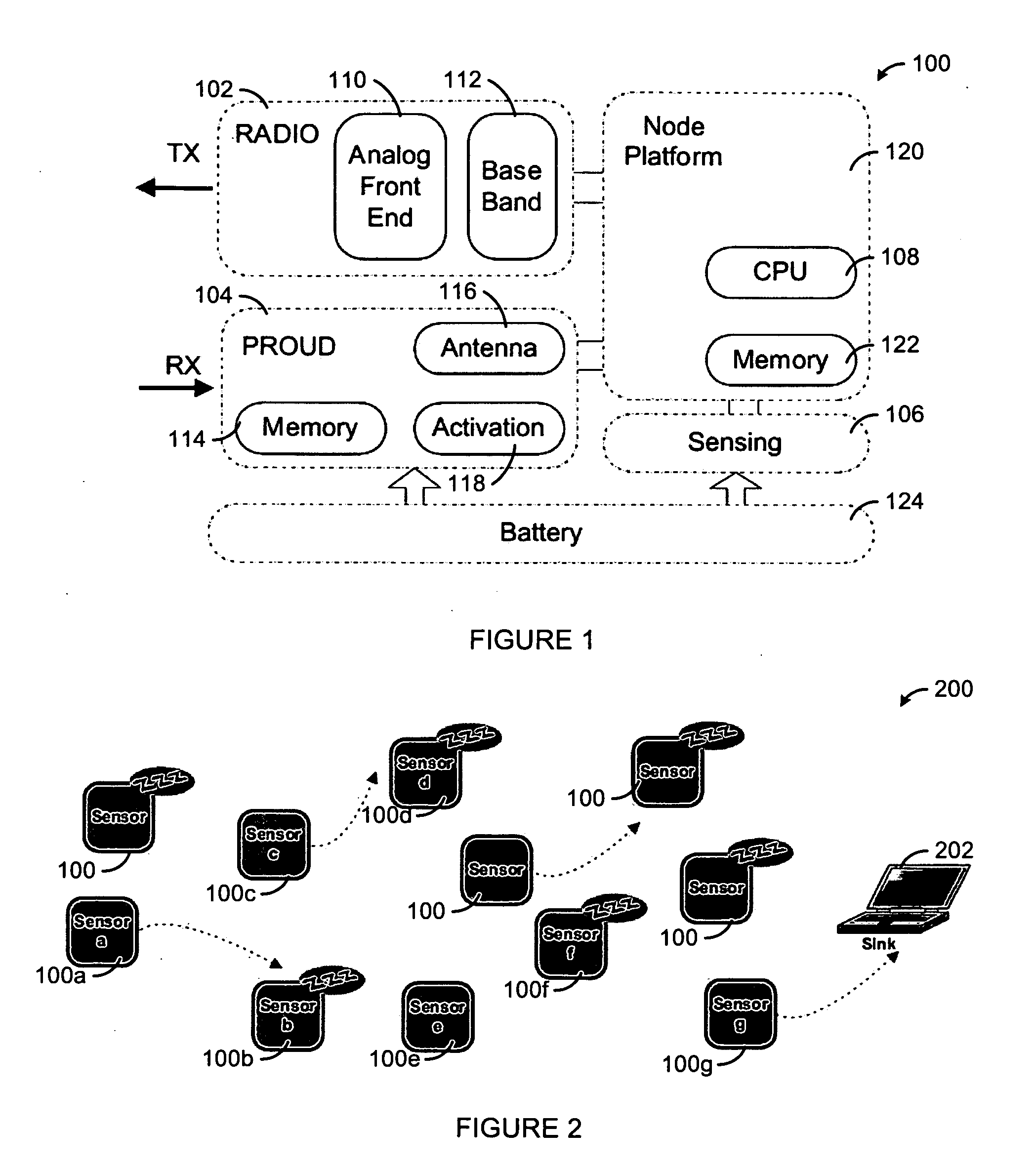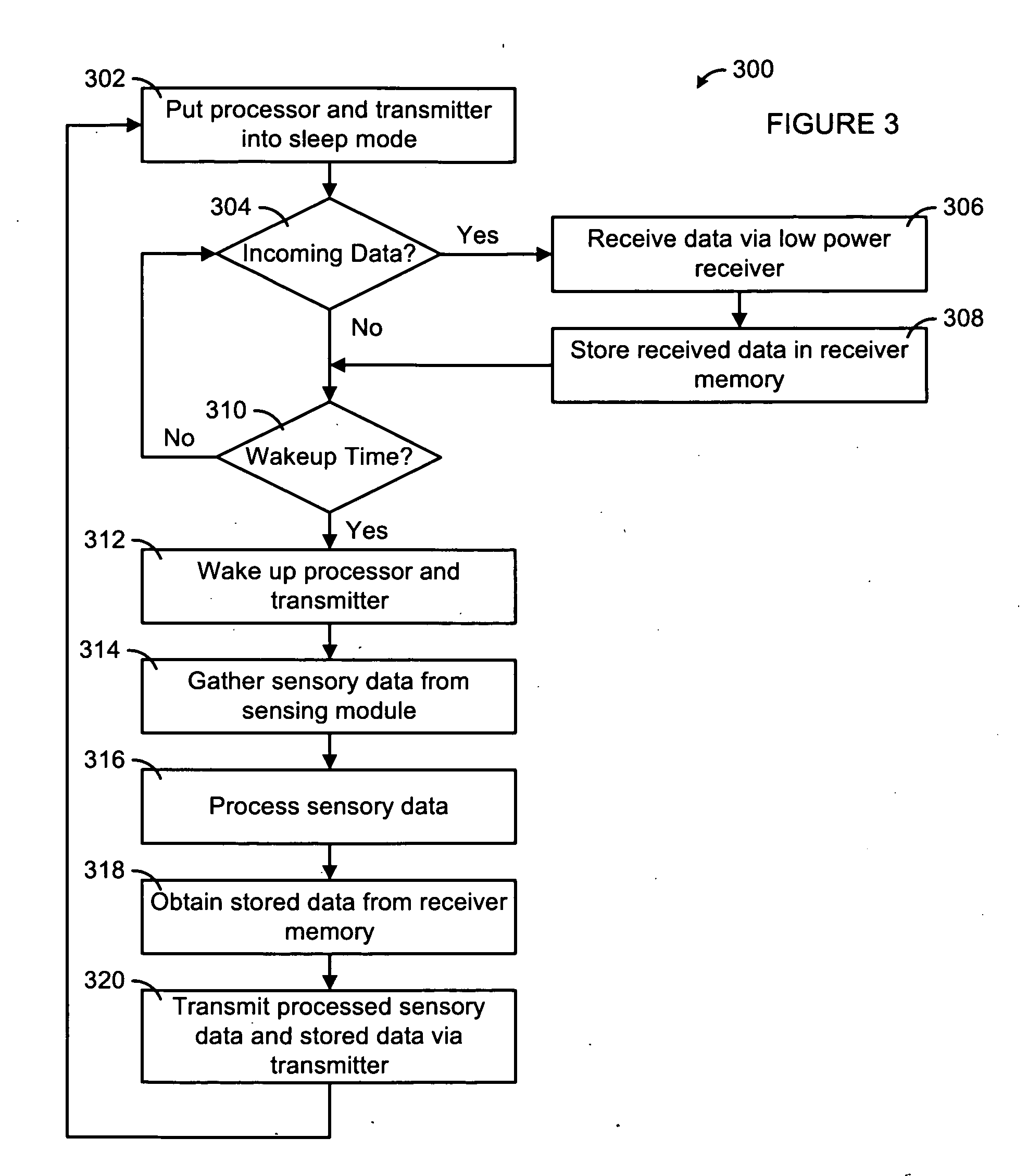System, Method and Apparatus for Asynchronous Communication in Wireless Sensor Networks
a wireless sensor network and wireless sensor technology, applied in the field of wireless communication, can solve the problems of high collision probability, irrelevant packet listening, and unasynchronous communication, and achieve the effect of significant energy efficiency and reducing collisions and idle listening
- Summary
- Abstract
- Description
- Claims
- Application Information
AI Technical Summary
Benefits of technology
Problems solved by technology
Method used
Image
Examples
Embodiment Construction
[0024]While the making and using of various embodiments of the present invention are discussed in detail below, it should be appreciated that the present invention provides many applicable inventive concepts that can be embodied in a wide variety of specific contexts. The specific embodiments discussed herein are merely illustrative of specific ways to make and use the invention and do not delimit the scope of the invention. The discussion herein relates primarily to wireless sensor networks, but it will be understood that the concepts of the present invention are applicable to any asynchronous communication system.
[0025]The present invention employs lower power radio and store-and-forward processes to provide an asynchronous communication architecture for wireless sensor networks, where sensor nodes are allowed to independently transmit without requiring any synchronized sleep / wakeup. Specifically, the transmitter directly writes data into a special module residing on the receiver ...
PUM
 Login to View More
Login to View More Abstract
Description
Claims
Application Information
 Login to View More
Login to View More - R&D
- Intellectual Property
- Life Sciences
- Materials
- Tech Scout
- Unparalleled Data Quality
- Higher Quality Content
- 60% Fewer Hallucinations
Browse by: Latest US Patents, China's latest patents, Technical Efficacy Thesaurus, Application Domain, Technology Topic, Popular Technical Reports.
© 2025 PatSnap. All rights reserved.Legal|Privacy policy|Modern Slavery Act Transparency Statement|Sitemap|About US| Contact US: help@patsnap.com



